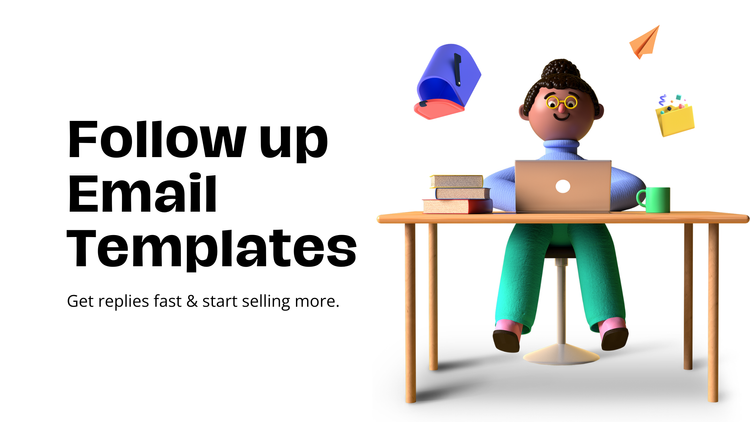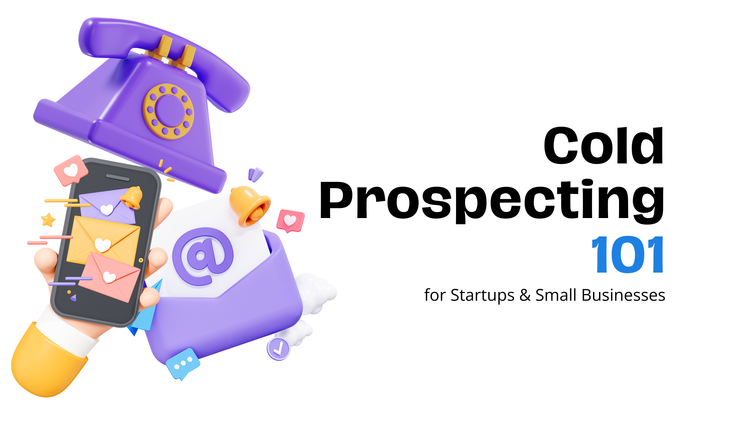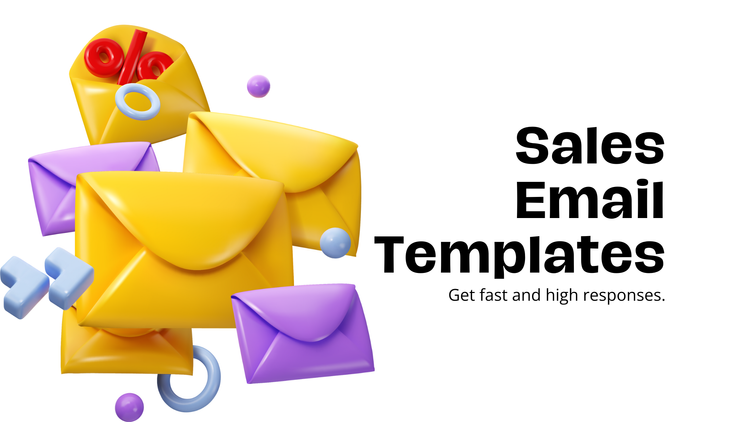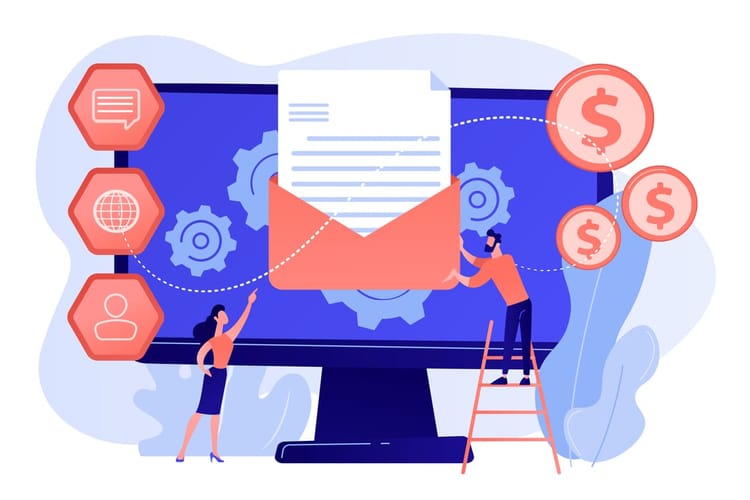5 Cold Prospecting Email Templates for 2025

Prospecting email success in 2025 comes down to one thing: personalization. A recent Forbes article asked 16 members of their Communications Council about the do’s and don’ts of cold outreach, and their advice was clear—ditch the generic emails. “Show ’em you know ’em,” “Don’t be formulaic,” and “Personalization is everything” were the key takeaways. Why? Because nobody responds to an email that feels like a mass blast.
Think about your own inbox. Are you more likely to open a generic email that screams “sent to 1,000 people,” or one that speaks directly to you? It’s obvious—the more personal and relevant an email feels, the better the chances of a response. That’s why crafting a strong prospecting email isn’t just about writing—it’s about making sure the right people receive the right message.
Before you send that next cold email, ask yourself: “Would I open or respond to this?” If the answer is no, your prospect won’t either. Fix your targeting, rewrite the email, and focus on making it sound like a real person is reaching out to another real person.
Of course, even the best-written prospecting email won’t land if you’re sending it to the wrong people. That’s why your prospecting strategy needs to be airtight—from crafting the message to building a high-quality, verified email list. Now, let’s break down exactly how to do that, step by step.
#1. Reach Your Prospect Indirectly
Hi {first name},
I came across your name on {source} and was wondering if you could help me out.
I have a solution for {industry problem or pain point} that I think {company name} could really benefit from, but I’m having trouble connecting.
Who is the right person to discuss this opportunity with, and how may I reach them?
I appreciate your time.
{insert email signature here}
If you can’t reach the decision-maker of a company, try reaching someone that can. Use LinkedIn to find employees in the company, and make an educated guess as to who would be most likely to forward your email.
(Source: Zendesk)
#2. Reposition With a Follow-Up Email
Hi [prospect’s name],
I’m really excited to get started with you on this, so I thought of sharing a [blog / ebook / video] we’ve recently published that expresses similar challenges you’re facing at [prospect’s company name].
Check them out here: [link to material]
What’s the best way to get on your calendar for 15 tomorrow? I would love to hear your feedback on it.
Best,
[name]
(Source: Hippo Video)
Just because you didn’t get a response the first go-round, doesn’t mean a follow-up email will fail. Always send a follow-up email a couple of days after your initial email, especially if you know they opened the first one. They might have been too busy to respond last time.
#3. Use Word-Of-Mouth
Hello {First name},
I just had an exciting conversation with {initial contact}, who directed me to you.
I noticed that {prospect company name} is being plagued by issues like {pain point 1}, {paint point 2}, {pain point 3}....
{Product name} can help solve these issues rapidly, and even {initial contact} strongly believes in it.
However, he also pointed out that you are the person who can take a call on this and suggested we have a chat.
Can we have a quick 5-10 minute call next week to explore our solution to these challenges?
Shoot me an email, and I will fix a call at your convenience.
Warm regards,
{Your name}
(Source: Klenty)
That mutual contact can go a long way when it comes to getting responses. It’s all about getting a conversation started. Even in social settings, bringing up someone you both know can help carry a conversation.
#4. Use Their Success Stories
Hey [Prospect],
Congratulations on your recent round of funding.
What you are doing is going to impact the law profession in a major way.
I look forward to seeing how you'll deploy your new resources to do it even faster.
Regards,
[Your name]
(Source: HubSpot)
There are so many sources out there to learn more about your recipients. Find something they’ve accomplished and congratulate them on their success. Everyone appreciates a little pat on the back.
#5. Use the Before-After-Bridge
Hi [name],
I noticed that your [blog/site] isn’t optimized for mobile. This might be causing you to lose many potential customers.
What if I told you there was a [tool/service/plugin] which could optimize the experience of your website on mobile devices?
That’s exactly what [your product] helps you do.
Would you be interested in learning more?
Thanks,
[Your name]
(Source: Pipedrive)
This formula is simple:
- Before: Here is the problem your business has (be nice!).
- After: Here’s how your business would look without that problem.
- Bridge: Here’s how this product/service will get you there.
The Data Behind Prospecting Emails: What Actually Works
When it comes to personalizing cold emails, the statistics are overwhelming. According to Woodpecker, when they sent a personalized cold email campaign, it received a 50% response rate.
But it’s not just about the reader-oriented text in your cold prospecting email templates, it’s also about the people you’re emailing. Woodpecker found, after analyzing over 20 million emails, that by narrowing down your list and verifying email addresses, you can increase your open rate significantly. By using an email finder tool, it’s easier to find real email addresses so you can reach more people.
That same Woodpecker study also found that cold emails can be improved by including customized snippets like {{first_name}} and {{company_name}}. According to their numbers, this increased open rates from 7% to 17%. That might not seem like much, but 10% is a huge increase in the cold email game.
Anything you can do to boost the open and response rates of your email campaign is worth a try. The most experienced startup founders and heads of salespeople use cold prospecting email templates. If you want to try a new one in your next outreach campaign, keep reading.
Don’t Forget to Perfect Your Email List!
These cold prospecting emails are great, but they’re not going to be effective unless you narrow down your email list to the recipients that are most likely to open and respond. That also means finding verified email addresses so that you’re actually reaching your prospects. Otherwise, writing all those personalized emails is just a waste of time.
To find email addresses that are linked to a prospect, try the Skrapp.io cold email tool. Our Web extension smartly integrates with your Linkedin and Sales Navigator and provides verified email addresses of leads instantly.
FAQs: Prospecting emails
How do I send an email to a prospect?
To send an email to a prospect, start by crafting a compelling subject line that grabs attention. Address the prospect by name to personalize the message. In the opening line, clearly state the purpose of your email and how it benefits them. Keep the content concise and relevant, focusing on their needs and how your offering provides a solution. Conclude with a clear call-to-action, such as scheduling a call or providing additional information. Ensure your contact information is easily accessible for follow-up.
What is a prospect email list?
A prospect email list is a curated collection of potential customers' contact information, including names, email addresses, job titles, and company details. This list serves as a foundation for targeted sales and marketing efforts, enabling businesses to reach out to individuals who may be interested in their products or services. Building an accurate prospect email list involves identifying and compiling data on individuals or organizations that fit your ideal customer profile.
How do I find prospects' email addresses?
Finding prospects' email addresses can be achieved through several methods:
- Professional Networking Platforms: Utilize platforms like LinkedIn to identify potential prospects and gather contact information.
- Company Websites: Visit the official websites of target companies; contact details are often listed in the 'About' or 'Contact' sections.
- Email Finder Tools: Employ specialized tools, like Skrapp, designed to locate and verify email addresses associated with specific individuals or domains.
- Webinars and Events: Participate in industry-related events where contact information is shared among attendees.
Is it better to call or email a prospect?
Deciding whether to call or email a prospect depends on various factors, including the nature of your offering, the prospect's preferences, and the context of your outreach. Emails provide a non-intrusive way to introduce yourself and allow prospects to respond at their convenience. They are suitable for sharing detailed information and can be easily referenced later. Calls, on the other hand, offer a personal touch and can lead to immediate interaction, allowing for real-time clarification and rapport building. Assess the situation and, when appropriate, consider a combination of both methods to effectively engage prospects.





